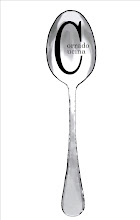Wow! That was a big hiatus! Eighteen days without posting a blog. I have been very lazy, sorry. It is summer after all (is it? I really did not notice it) and the warm weather slows you down, you know. Well, that’s what they say, don’t they? Look at the stereotype of the indolent, lethargic, slothful Latinos, the ones sleeping in the sunny lanes against white-painted walls with a big sombrero on their jet-black-haired heads covering their round, brown, moustached faces. Yes, that stereotype.
It reminds me of one of my favourite Italian jokes. Would you like to hear it (actually, read it)? I’ll post it anyhow.
A hyperactive Milanese business man arrives at Naples station one afternoon. As he darts for the exit gate he sees a young man languidly lying on a bench. The business man, annoyed at such a view, addresses the young one in no uncertain terms: “Look at you! You are in your prime and what do you do? Nothing! You lay there all day doing nothing! I bet you didn’t even bother with lunch, today.” “Oh yeah – says the young man – I had lunch alright.” “Really? - amused the business man – And pray, what did you have for lunch?” “A snail - replied the Neapolitan” “A snail? – yelled incredulously the Milanese – You had ONE SNAIL for lunch? “
“Well, actually – says the young one – There were two of them, but one managed to run away!”
Being of a Southern descent I assure you that not all Neapolitans are lazy. And I can also assure you that “escargots” are not really a Naples specialty, but rather a Roman one. What is genuinely Neapolitan, though, is the dish I am proposing to you today: Spaghetti alle vongole veraci – Spaghetti with ‘veraci’ clams. Verace means genuine, truthful, veracious. So for this dish the Neapolitans use the ‘true’ clams (Ruditapes decussatus) as opposed to other varieties, such as the Philippine clams (Ruditapes philippinarum), which is what we normally get here in Australia.
However, anything is better than nothing and it’s ok to use them to make this “heavenly” dish.
For the white sauce variety, you need:
- 400 gr spaghetti/vermicelli/linguine
- 400 gr clams
- 1 garlic clove
- A teaspoon of chopped fresh red hot chilli
- Extra-virgin olive oil
- 200 ml white wine
- 2-3 tablespoon parsley, finely chopped
- Salt and pepper
For the red sauce version, just add a tin of Italian peeled tomatoes or 400 gr of fresh, chopped Sanmarzano (the ones we call Roma in Australia) to the above list.
Once your “mise en place” is completed and you have all your ingredients, tools, pans in front of you, proceed as follow:
Wash the clams in cold water – unless your fishmonger has already cleaned and washed them for you. Molluscs often retain grains of sand and you do not want a gritty taste spoil this divine preparation.
In a large pan (I often use a wok) put one-two tablespoon of oil, the garlic and the chilli. Let them brown on a moderate to high flame, and then throw in the vongole. Toss constantly so that all clams are coated with the juice, then pour the wine and keep tossing for a little longer. Put a lid on the pan and let the molluscs stew until they all open. Add some parsley, but save most of it for the final touch. At this point you can add the tomatoes as well, if you have opted for the red version. Lid back on and let the lot cook a few more minutes, for the flavours to mix. Pick the clams out of the pan and set them aside on a warm plate or in the microwave. In the mean time, cook the pasta in a generous quantity of salted, boiling water. Drain it very al dente. This is because you will mantecare it, that is finish it in the pan with the sauce which now contains also water discarded by the clams. Toss the pasta as it finishes cooking, until well coated. Pull it out still al dente and quickly put it in the serving bowls. Place the clams, shells and all, on top of the pasta and garnish with the remaining parsley. Serve hot, then pour yourselves a generous glass of dry white wine, possibly a Frascati Gotto d’Oro. You deserve it!



